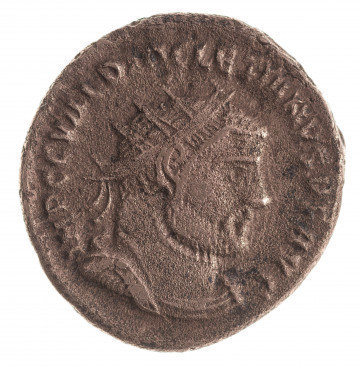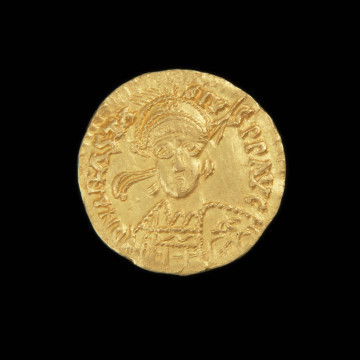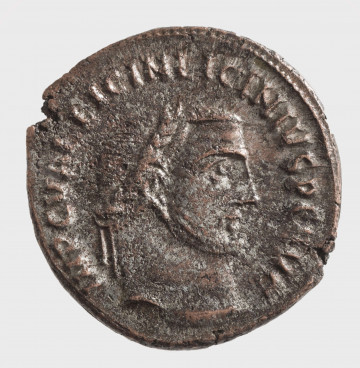
Antoninianus of Diocletian (284–305)
295 — 296
National Museum in Lublin
Part of the collection: Antique coins
Money appeared in the Roman state at the end of the 4th century BC. The first denarii were probably minted in 215/214 BC. They were issued in various centres of Italy, Gaul, Spain and Africa, and on the eastern borders of the vast Empire. A great variety of images and inscriptions prevailed among them. Apart from images of Roman deities, figures from history and legends, animals, and buildings. Images of commanders to whom divine worship was paid appeared in the declining period of the Republic. Julius Caesar was proclaimed a god for the first time, and his successors entered the pantheon of Roman deities. Between 87 and 77 BC, fluted denarii, the so-called denarii serrati, were minted numerously to prevent fraud in producing and circulating silver-plated coins. The serrated edge showed the inside of the denarii minted in those days from pure silver. The presented 'serratus' shows the god Jupiter's head on the obverse and the image of Victoria in a four-horse chariot on the reverse. Jupiter was the god of the universe, father of the gods, equivalent to the Greek Zeus. The letters S.C (Senatus Consulto) placed behind Jupiter's head signify the issuance of money by resolution of the Senate. On the reverse side, the winged goddess Victoria is depicted with attributes of victory - a laurel wreath, and peace - an olive branch. Victoria is one of the most famous mythological figures of ancient Rome. Even today, she often appears in public space as the patroness of peace and freedom. The so-called reverse section shows the abbreviated names of Quintus Antonius Balbus, the Praetor of Sardinia, in 82 BC. During the Republic, praetors were elected for one year and dealt mainly with the judiciary (issued edicts). In the last century of the Republic, it was the practice to put the names of high officials and army commanders on coins, which was supposed to have a propagandistic effect on the users. Based on comparative analyses of images and legends, it is known that the presented specimen comes from the central mint in Rome.
Genowefa Horoszko
Other names
Denarius serratus
Author / creator
Dimensions
cały obiekt: height: 2,1 mm
Object type
coin
Technique
minting
Material
silver
Creation time / dating
Creation / finding place
Owner
National Museum in Szczecin
Identification number
Location / status

295 — 296
National Museum in Lublin

471 — 526
National Museum in Szczecin

315
National Museum in Lublin
DISCOVER this TOPIC
Castle Museum in Łańcut
DISCOVER this PATH
Educational path